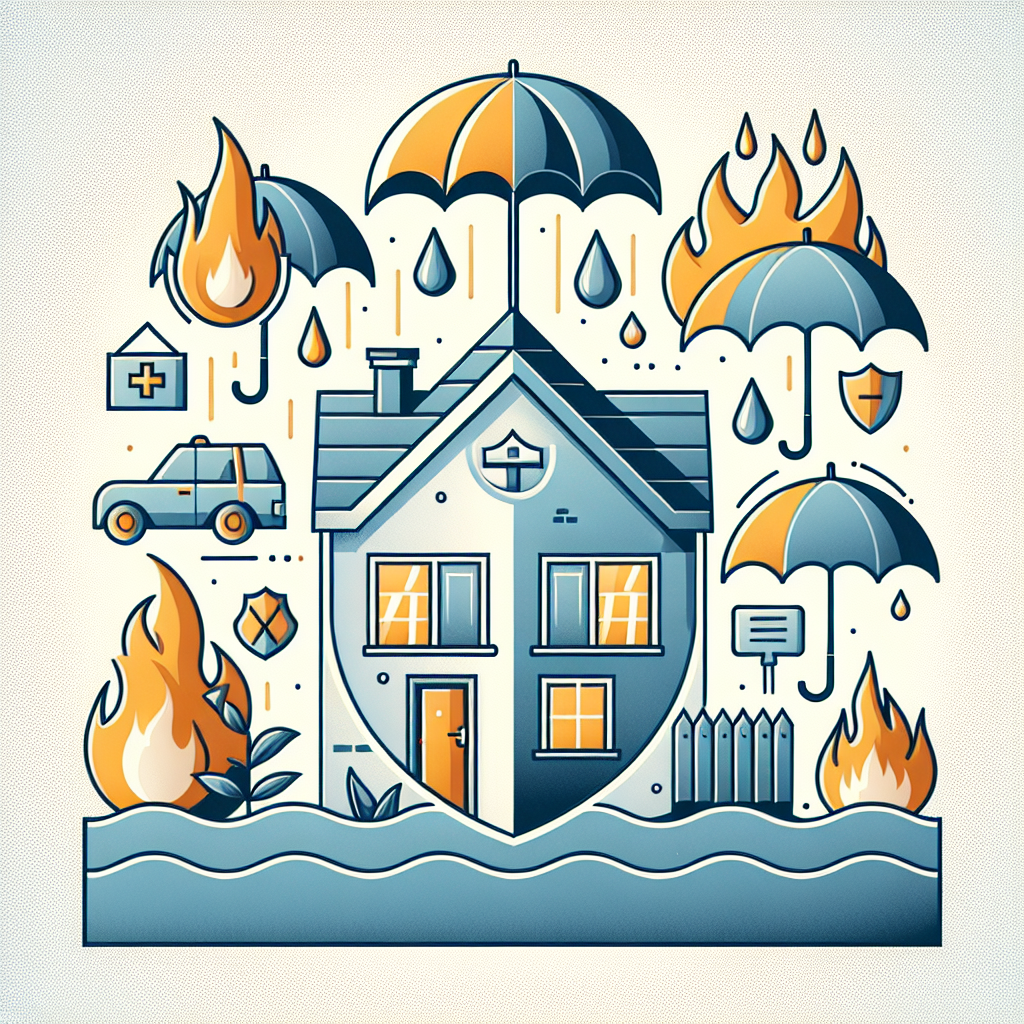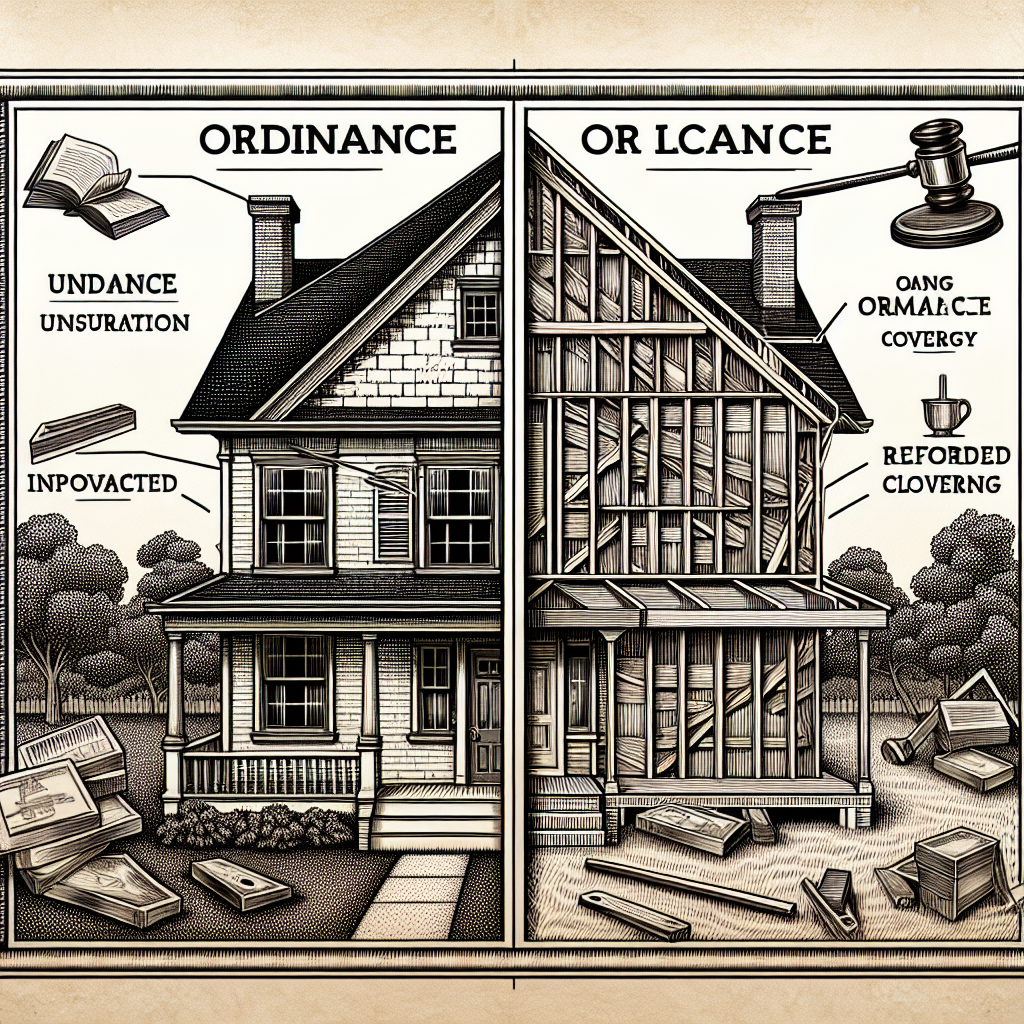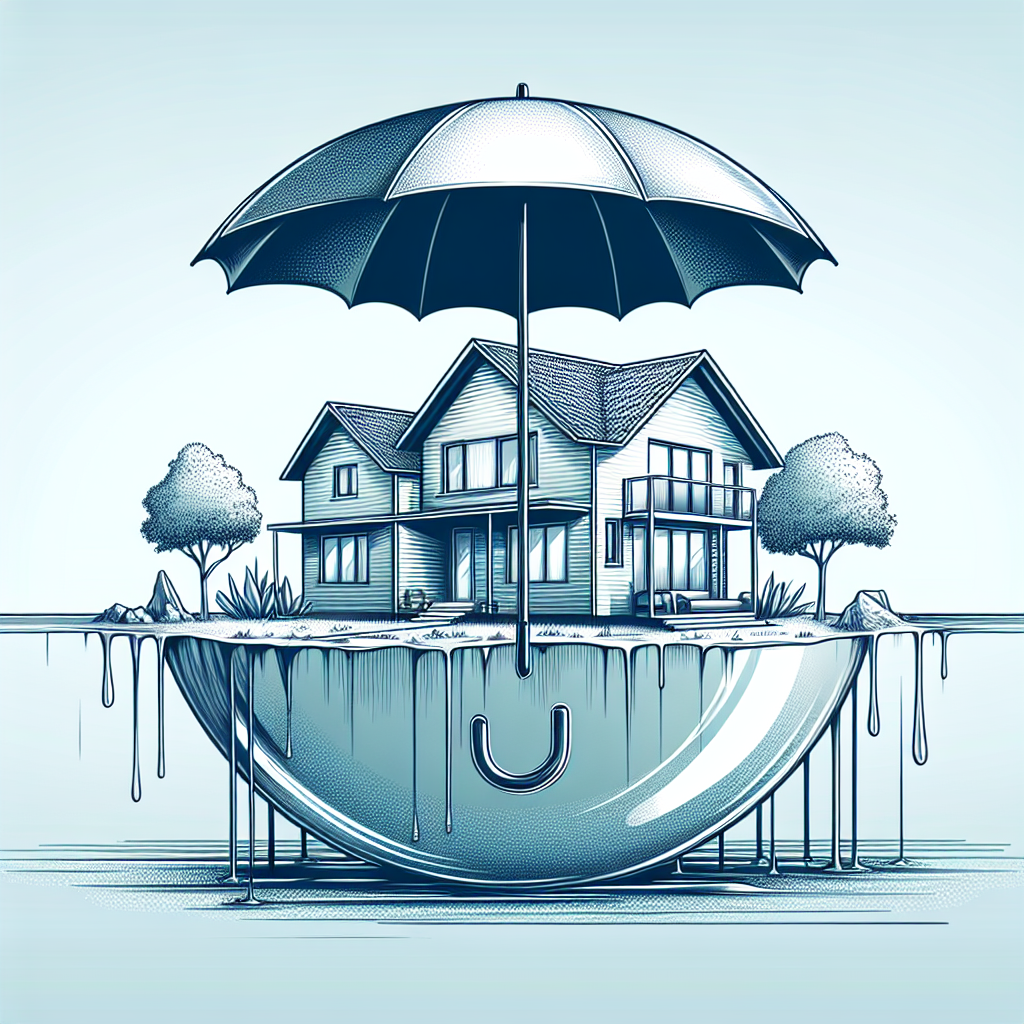Filed under Home Insurance on
Types of Insurance Coverage for Homes Explained

Your home is more than a roof and four walls. It’s a collection of memories, investments, and responsibilities—and protecting it starts with understanding how home insurance works. Types of Insurance Coverage for Homes Explained isn’t just a catchy phrase; it’s the map that shows which risks are covered, which aren’t, and how to tailor a policy to your life. In the next few minutes, you’ll gain a clear grasp of the coverages that matter, the add-ons that plug gaps, and the market trends shaping premiums and availability.
What a Standard Homeowners Policy Typically Covers
Most owner-occupied single-family homes are insured on an HO-3 or HO-5 policy. While the wording varies by insurer and state, the building blocks are remarkably consistent. If you’ve ever wished for Types of Insurance Coverage for Homes Explained in one place, start with these core parts of a standard package:
Core Components (The A–F Coverages)
- Dwelling (Coverage A): Pays to repair or rebuild your home’s structure if damaged by covered perils like fire, wind, or theft. This limit should reflect replacement cost, not the market value.
- Other Structures (Coverage B): Sheds, fences, detached garages—typically 10% of Coverage A, adjustable if you have extensive outbuildings.
- Personal Property (Coverage C): Your belongings—furniture, electronics, clothing—covered worldwide up to a limit. Options include actual cash value (depreciated) or replacement cost.
- Loss of Use (Coverage D): Also called Additional Living Expenses (ALE). Covers temporary housing, meals, and extra costs if a covered loss makes the home uninhabitable.
- Personal Liability (Coverage E): Protects your finances if you’re legally responsible for bodily injury or property damage to others. Limits commonly start at $300,000 and can be increased to $500,000 or more.
- Medical Payments to Others (Coverage F): No-fault coverage for minor injuries to guests, typically $1,000–$5,000 limits.
Understanding these six parts is the heart of Types of Insurance Coverage for Homes Explained. Together, they form a safety net that helps you rebuild, replace, and recover after a covered loss.
Open-Peril vs. Named-Peril Coverage
How losses are defined matters. Most HO-3 policies insure the dwelling on an “open-peril” basis: everything is covered unless specifically excluded (like flood or earth movement). Personal property is often “named-peril,” covering only listed causes, such as fire, theft, and vandalism. HO-5 policies expand “open-peril” coverage to your belongings and may broaden limits for certain items.
Sublimits You Should Know
Even robust policies contain sublimits for certain categories, especially high-theft items. Common examples: jewelry, fine art, firearms, silverware, collectibles, and cash. If your engagement ring or watch collection exceeds the default limit, ask about scheduling (itemizing) with an appraisal. This often removes the deductible and broadens coverage.
Policy Forms at a Glance
Policy “forms” are industry-standard templates describing who and what is covered. Think of this section as Types of Insurance Coverage for Homes Explained from the form perspective, which helps you quickly identify the right fit.
- HO-1 (Basic) and HO-2 (Broad): Named-peril coverage forms, now less common for primary residences because of limited protection.
- HO-3 (Special): The modern staple for homeowners, offering open-peril dwelling coverage and named-peril personal property, with options to upgrade.
- HO-5 (Comprehensive): A step up, typically offering open-peril coverage for both the dwelling and personal property and higher limits for certain items.
- HO-4 (Renters): Covers tenants’ belongings and liability; the landlord’s policy covers the building.
- HO-6 (Condo): Coordinates with your condo association’s master policy and covers interior fixtures, personal property, loss assessments, and liability.
- HO-7 (Mobile/Manufactured Homes): Tailored to the unique construction and placement of manufactured homes.
- HO-8 (Older/Historic Homes): Designed for homes where replacement with original materials is impractical; often uses modified coverage terms.
- DP-3 (Landlord/Dwelling Fire): For rental properties; often open-peril on the structure with optional endorsements for loss of rent and other risks.
Replacement Cost vs. Actual Cash Value
Two valuation methods determine payout:
- Replacement Cost (RC): Pays to rebuild or replace with new materials of like kind and quality, without depreciation. Most homeowners should aim for RC on both the dwelling and personal property.
- Actual Cash Value (ACV): Replacement cost minus depreciation. Results in lower premiums but also lower payouts.
Many insurers offer Extended Replacement Cost (e.g., 25%–50% above Coverage A) or Guaranteed Replacement Cost, helping address cost spikes after catastrophes. A common requirement is insuring to at least 80%–100% of replacement cost to avoid a coinsurance penalty. Ask your insurer how they calculate reconstruction cost and whether features like inflation guard automatically adjust limits at renewal.
Deductibles and Special Catastrophe Deductibles
Your deductible is what you pay out of pocket per claim before insurance responds. Flat deductibles ($1,000–$5,000) are common, but in many states, wind, hail, or hurricane losses have percentage deductibles (1%–5% of Coverage A). In hail-prone regions, separate wind/hail deductibles are now standard. Earthquake coverage—when purchased—often carries higher deductibles too. Choose a deductible that balances affordability and meaningful premium savings; higher deductibles can reduce rates but may discourage small claims.
Major Exclusions—and How to Close the Gaps
Even the broadest policies exclude certain perils. Types of Insurance Coverage for Homes Explained must cover what your base policy won’t, and how endorsements or separate policies fill in the blanks.
Common Exclusions
- Flood: Not covered by homeowners insurance. Consider the National Flood Insurance Program (NFIP) or private flood insurance. Risk isn’t limited to coastal areas; inland flooding is increasingly common.
- Earth Movement: Earthquake, landslide, sinkhole—usually excluded unless you add an endorsement or buy a separate policy. Some states offer specialized pools or plans.
- Maintenance and Wear: Mold, rot, pest damage, gradual leaks, and mechanical breakdown are typically excluded as “preventable” issues.
- Power Failure/Utility Service: Off-premises outages may be excluded unless endorsed.
- Ordinance or Law: Extra costs to bring a damaged structure up to current code aren’t fully covered without specific ordinance or law coverage.
Endorsements and Add-Ons Worth Considering
- Water Backup and Sump Overflow: Covers damage from backups through sewers, drains, or sump systems—commonly excluded otherwise.
- Equipment Breakdown: Extends protection to home systems and appliances from mechanical or electrical breakdown.
- Service Line: Pays for buried utility lines (water, sewer) running to your home that you own.
- Ordinance or Law: Adds a percentage (often 10%–50%) of Coverage A to pay for code upgrades after a covered loss.
- Extended or Guaranteed Replacement Cost: Protects against construction cost inflation or post-disaster price spikes.
- Special Personal Property Coverage: Upgrades named-peril personal property to open-peril.
- Scheduled Personal Property: Itemizes high-value jewelry, art, or collectibles, often without deductible and with broader coverage.
- Identity Theft and Cyber: Helps with restoration costs if your identity is compromised; some policies offer home cyber protection for smart devices.
Condo, Renters, and Landlord Nuances
Different living arrangements call for tailored policies. A condo policy (HO-6) covers interior features, improvements, personal property, loss assessment (when the association levies a charge after a covered loss), and liability. Renters (HO-4) insure their belongings and liability, while the building remains the landlord’s responsibility. Landlords use DP-3 policies to protect the structure and can add loss-of-rent coverage; tenants still need renters insurance. This is another angle of Types of Insurance Coverage for Homes Explained because each form aligns with a distinct property relationship.
How Much Coverage Do You Need?
Insuring for the right amount is critical. Set Coverage A using a reconstruction cost estimator—not the purchase price. Market value includes land; insurance does not. Features like custom cabinetry or specialty roofing raise rebuild costs, so the estimate should reflect local labor, materials, and code requirements.
- Dwelling: Aim for 100% of estimated replacement cost. Consider extended or guaranteed replacement cost.
- Other Structures: Increase limits if you have large sheds, detached studios, or extensive fencing.
- Personal Property: A home inventory helps set limits. Replacement cost coverage usually pays off at claim time.
- Loss of Use: Estimate several months of living expenses. Major events can lengthen rebuild timelines.
- Liability: Start at $300,000–$500,000. Add a personal umbrella policy (often $1 million+) for extra protection if you have significant assets or risks like a pool, trampoline, or frequent hosting.
- Sublimits: Schedule valuables to avoid shortfalls and deductibles.
Claims: What to Expect and How to Prepare
When a loss occurs, documentation is your friend. Photograph damaged areas, save receipts, and keep a running log of conversations. For larger losses, contractors’ detailed line-item estimates help ensure accurate scope and pricing. Loss of Use coverage usually reimburses reasonable additional expenses (like the difference between normal and temporary housing costs). Maintain a digital home inventory stored off-site or in the cloud. For disputes over scope or pricing, some states allow appraisal or mediation mechanisms within the policy’s conditions.
Market Trends Shaping Home Insurance in 2025
Understanding the market context is part of Types of Insurance Coverage for Homes Explained. Over the past few years, insurers have faced higher catastrophe losses, reinsurance costs, and construction inflation. According to industry groups like the Insurance Information Institute and state insurance regulators, this has led to tighter underwriting, premium increases, and in some regions, reduced capacity or non-renewals.
- Climate and Catastrophes: Severe convective storms, wildfires, and hurricanes have driven record insured losses in multiple years. Hail and wind claims in the central U.S., wildfire risk in parts of the West, and hurricane exposure along the Gulf and Atlantic coasts remain top concerns.
- Reconstruction Costs: Labor shortages and material volatility complicate rebuilds. Insurers increasingly encourage extended replacement cost and inflation guard endorsements.
- Underwriting Technology: Carriers use aerial imagery, remote inspections, and predictive analytics to assess roof age, vegetation, and property condition—sometimes requiring mitigation before renewal.
- Mitigation Incentives: Discounts for impact-resistant roofing, defensible space, and fortified construction are expanding. Programs modeled on the IBHS FORTIFIED standards are gaining traction.
- Catastrophe Deductibles and Coverage Changes: Percentage deductibles for wind/hail and hurricane exposures are more common. Some carriers narrow coverage in high-risk areas while others offer parametric add-ons that pay a preset benefit when an event threshold is met.
- Flood Risk Repricing: FEMA’s Risk Rating 2.0 aims to align NFIP premiums with property-specific flood risk, encouraging more accurate pricing and, in some cases, private flood competition.
Savings Without Sacrificing Protection
Price matters, but so does resilience. You can often reduce costs while improving your protection.
- Bundle and Loyalty: Multi-policy discounts (home + auto) can be substantial.
- Smart Deductibles: A higher all-peril deductible saves money; consider a separate wind/hail deductible appropriate for your region.
- Mitigation Upgrades: Class 4 impact-resistant roofs, storm shutters, fire-resistant landscaping, and water-leak sensors can earn discounts and reduce claim odds.
- Security and Maintenance: Monitored alarms, updated wiring, new plumbing, and roof maintenance signal lower risk.
- Shop and Compare: Obtain quotes from multiple A-rated carriers, but compare coverage details—not just price.
- Credit and Claims History: In many states, credit-based insurance scores affect premiums, and frequent small claims can raise rates. Save insurance for big losses.
Real-World Scenarios
Seeing how coverage applies in real life helps bring Types of Insurance Coverage for Homes Explained into focus.
- Coastal Homeowner: A family near the Gulf carries HO-3 with hurricane deductible, impact windows, and extended replacement cost. They add private flood insurance due to storm surge risk, water backup endorsement for heavy rains, and schedule jewelry. Outcome: broader catastrophe protection and premium credits for mitigation.
- Wildfire-Exposed Property: In a Western foothills community, the owner clears defensible space and replaces a wood shake roof with Class A materials. Ordinance or law and extended replacement cost endorsements help cover code upgrades and post-event cost spikes. Outcome: better renewal odds and reduced risk.
- Urban Condo Owner: The HO-6 coordinates with the association’s master policy. Loss assessment coverage is increased to meet bylaws, and personal property is set to replacement cost. Water damage is the top exposure, so water sensors and a water backup endorsement are added. Outcome: less risk of out-of-pocket condo assessments.
- Landlord Duplex: A DP-3 policy covers the structure with loss-of-rent added. Each tenant carries renters insurance per the lease. Outcome: steady income protection if a covered loss displaces tenants.
Common Pitfalls to Avoid
- Underinsuring the Dwelling: Market value is not rebuild cost. Use a robust estimator and revisit annually.
- Ignoring Sublimits: High-value items need scheduling; otherwise, payouts may disappoint.
- Assuming Flood or Earthquake Are Included: They’re not. Consider standalone policies based on your risk map.
- Overlooking Ordinance or Law: Older homes face code upgrade costs—add coverage.
- Choosing the Lowest Premium Only: Narrow coverage can leave expensive gaps.
Checklist Before You Buy or Renew
- Confirm dwelling limit reflects today’s rebuild cost, including specialized finishes.
- Add extended or guaranteed replacement cost where available.
- Upgrade personal property to replacement cost and create a home inventory.
- Raise liability to at least $300,000; consider a personal umbrella.
- Add water backup, service line, and ordinance or law based on your home’s age and systems.
- Assess flood and earthquake needs; get quotes even if your lender doesn’t require them.
- Select a deductible strategy aligned with your emergency fund.
- Ask about mitigation discounts for roofing, alarms, and wildfire hardening.
- Review sublimits; schedule jewelry, art, or collectibles as needed.
- Compare carriers on financial strength and claims reputation—not just price.
Frequently Asked Questions
Is water damage always covered?
Sudden and accidental water damage—like a burst pipe—is typically covered, but flood from rising water and long-term leaks are not. Add water backup coverage for sewer or sump issues, and consider flood insurance for external water intrusion.
How do I know if I have enough Loss of Use coverage?
Estimate temporary rent in your area for several months and add meal and transportation costs. Large catastrophes can strain contractor availability, extending rebuild timelines. Increase your limit if local rents are high.
Will my policy pay for code upgrades?
Only if you have ordinance or law coverage. Many standard policies include a small percentage by default, but older homes often need higher limits to meet current building codes.
What’s the difference between HO-3 and HO-5?
HO-3 commonly provides open-peril coverage for the dwelling and named-peril for personal property. HO-5 usually extends open-peril to belongings and may increase special limits, offering broader protection at a higher premium.
Do I need a separate policy for a short-term rental?
Yes—occasional short-term rentals may be endorsed onto a homeowners policy, but frequent or full-time short-term rentals often require a specialized policy. Insurers treat guest turnover, vacancy, and liability differently.
Expert Perspectives and Industry Insights
Insurance professionals consistently recommend aligning coverage with realistic risk. Analysts and regulators note a multi-year trend of higher catastrophe losses, rising reinsurance costs, and tighter underwriting. Consumer groups and the Insurance Information Institute advise annual coverage reviews, home inventories, and mitigation investments to maintain insurability and keep premiums in check. Contractors highlight the importance of extended replacement cost to cope with post-disaster price surges. Mortgage lenders emphasize flood risk evaluation beyond FEMA’s high-risk zones, as inland flooding is a growing hazard.
When to Revisit Your Coverage
- Major Renovations or Additions: Update Coverage A and ordinance or law limits.
- Big Purchases: Schedule new jewelry or art.
- Roof Replacement: Ask about discounts for impact-resistant materials.
- Life Changes: Marriage, new baby, or a home-based business can change liability needs.
- Regional Risk Shifts: New wildfire maps, increased hail frequency, or updated flood maps warrant policy changes.
Putting It All Together
The clearest path to confidence is a policy that matches your risks and your budget. Types of Insurance Coverage for Homes Explained is ultimately about decision-making: where to accept risk, where to transfer it, and how to build resilience. Choose replacement cost on the dwelling and belongings when possible, raise liability to protect your assets, and close common gaps with targeted endorsements. Flood and earthquake deserve a fresh look even outside traditional hot spots.
Your home deserves a plan built for real life, not just fine print. Work with a reputable agent, compare multiple quotes, and revisit your coverage at least once a year—or any time your home or risk profile changes. When a loss happens, you won’t be wondering what’s covered; you’ll already have Types of Insurance Coverage for Homes Explained and implemented in your favor.
From policy forms to endorsements, from deductibles to disaster trends, you now have Types of Insurance Coverage for Homes Explained in practical terms. Use this knowledge to safeguard your investment, manage your risks, and keep your life moving—even when the unexpected knocks on the door.





